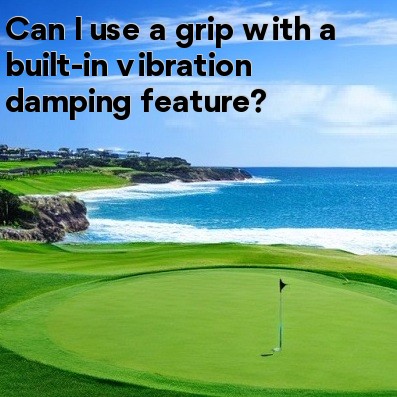
In golf, Can I use a grip with a built-in vibration damping feature?
When it comes to golf equipment, players are always looking for ways to improve their game. One aspect that can greatly impact a golfer's performance is the grip of the club. The grip is the only contact point between the player and the club, and it plays a crucial role in providing control and stability during the swing. In recent years, there has been a growing trend of grips incorporating vibration damping features to enhance the overall experience for golfers.
Traditionally, golf grips have been made from materials such as rubber, leather, or synthetic compounds. These grips offer a certain level of comfort and tackiness, allowing players to maintain a firm hold on the club. However, they may not provide the desired level of shock absorption when it comes to dampening vibrations caused by the impact of the clubhead with the ball.
That's where grips with built-in vibration damping features come into play. These grips are designed to minimize the vibrations felt by the player's hands, thus reducing fatigue and improving shot consistency. The vibration damping technology used in these grips varies from brand to brand, but the general principle remains the same.
Most grips with vibration damping features consist of multiple layers. The outer layer, or the surface that comes into direct contact with the hands, is often made from a softer, more pliable material. This soft layer helps to absorb and dissipate the vibrations generated at impact. Underneath the softer layer, there may be additional layers or inserts made from materials with high shock-absorbing properties.
The benefits of using a grip with vibration damping are twofold. Firstly, it helps to reduce hand fatigue during a round of golf. The vibrations transmitted through the hands can be tiring, and over time, they can affect a player's grip pressure and swing mechanics. By minimizing these vibrations, players can maintain a more relaxed grip and swing more freely, resulting in better shot performance.
Secondly, grips with vibration damping features enhance overall shot consistency. When a golfer hits a shot with a club, the vibrations caused by the impact can disrupt the feedback loop between the hands and the brain, making it difficult to gauge the quality of the strike. By reducing these vibrations, golfers can have a clearer and more accurate sense of how well they are striking the ball, allowing them to make necessary adjustments to their swing and improve their ball-striking consistency.
- Improved comfort and reduced hand fatigue
- Enhanced shot performance and consistency
- Better feedback and control
Overall, using a grip with a built-in vibration damping feature can be a beneficial choice for golfers looking to enhance their game. It provides improved comfort, reduced hand fatigue, enhanced shot performance, and better feedback and control. However, it's important to note that golf grips are a personal preference, and what works for one player may not work for another. Therefore, it's recommended to try out different grips, including those with vibration damping features, to find the one that best suits your needs and playing style.





